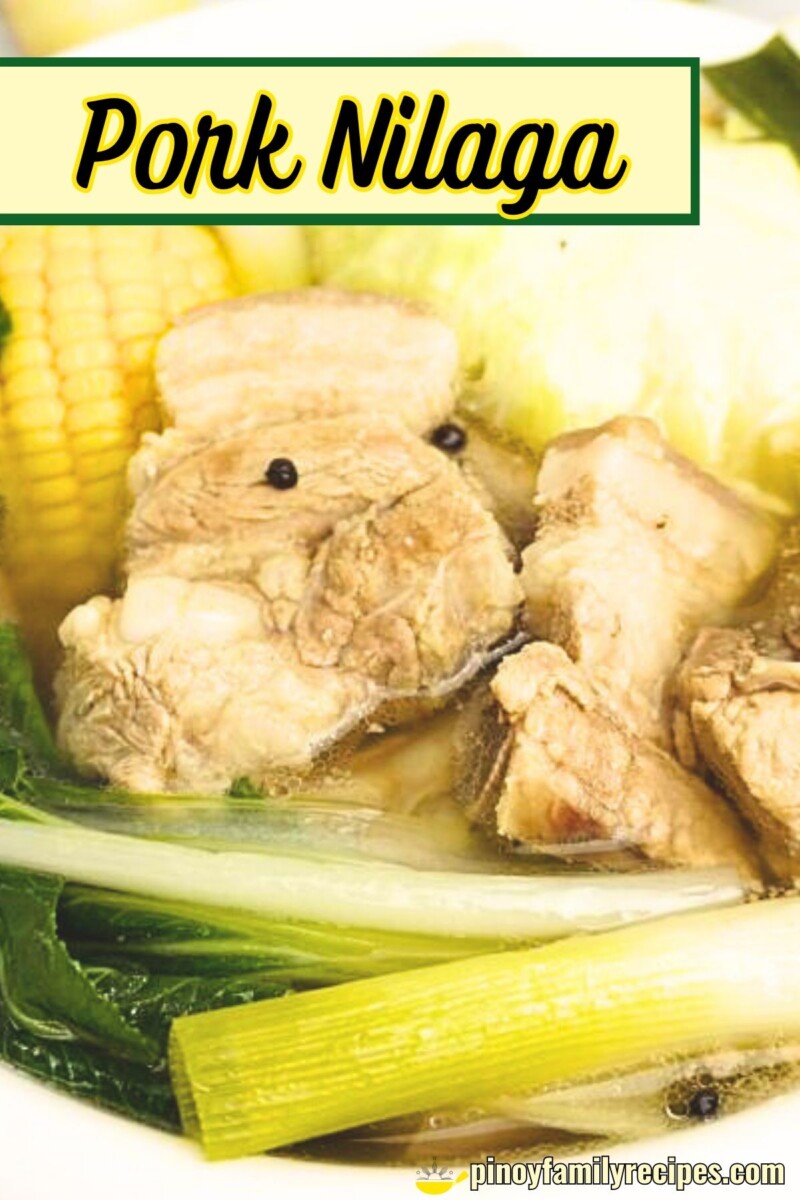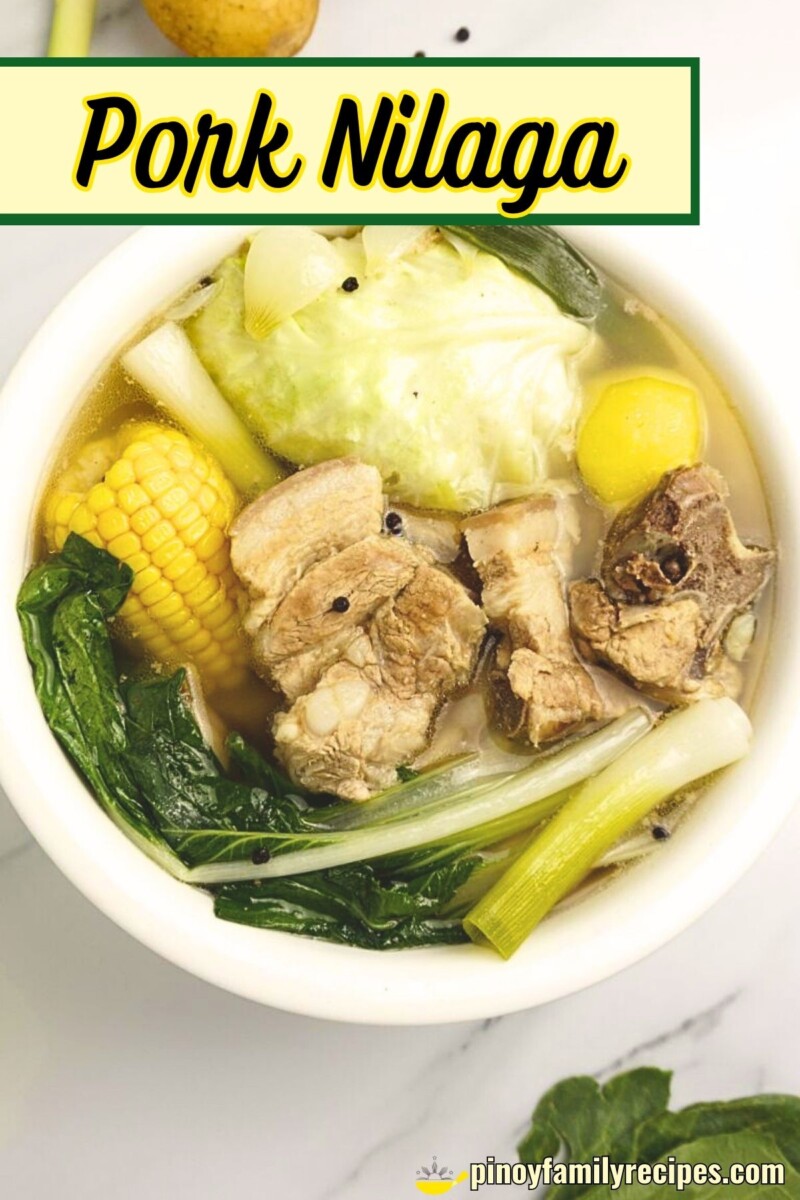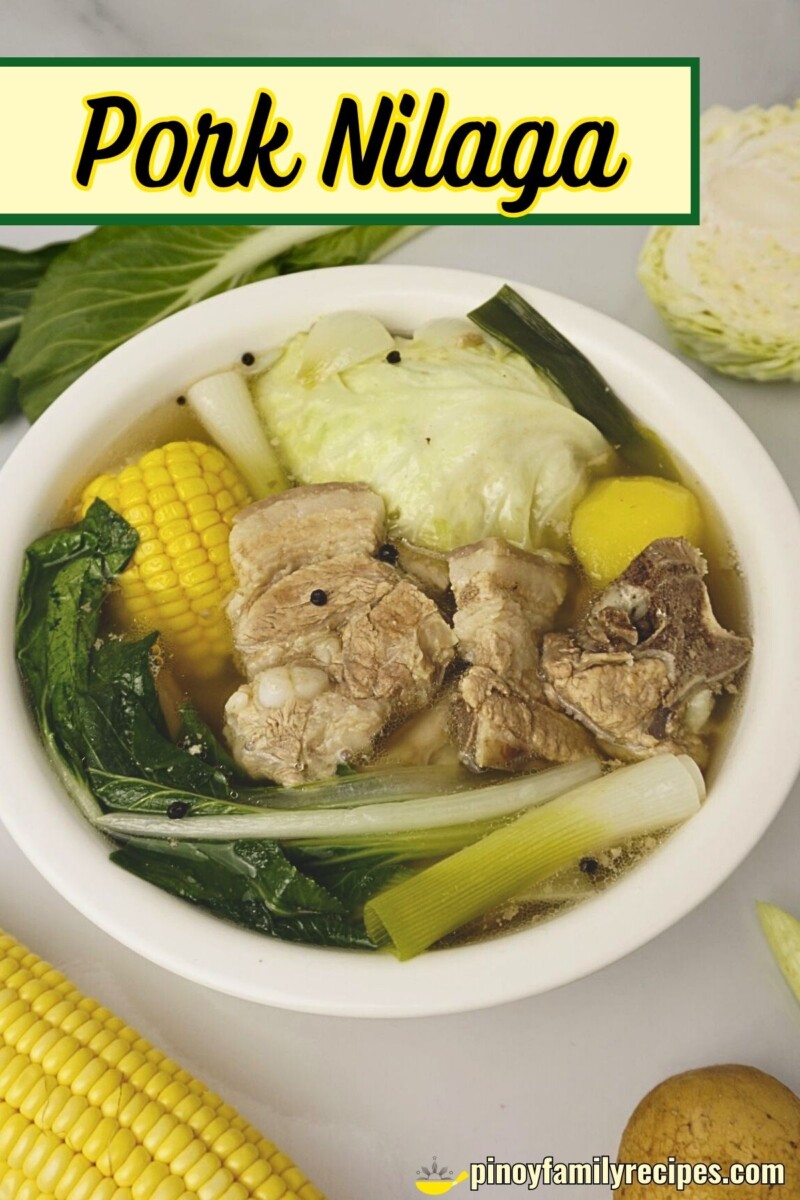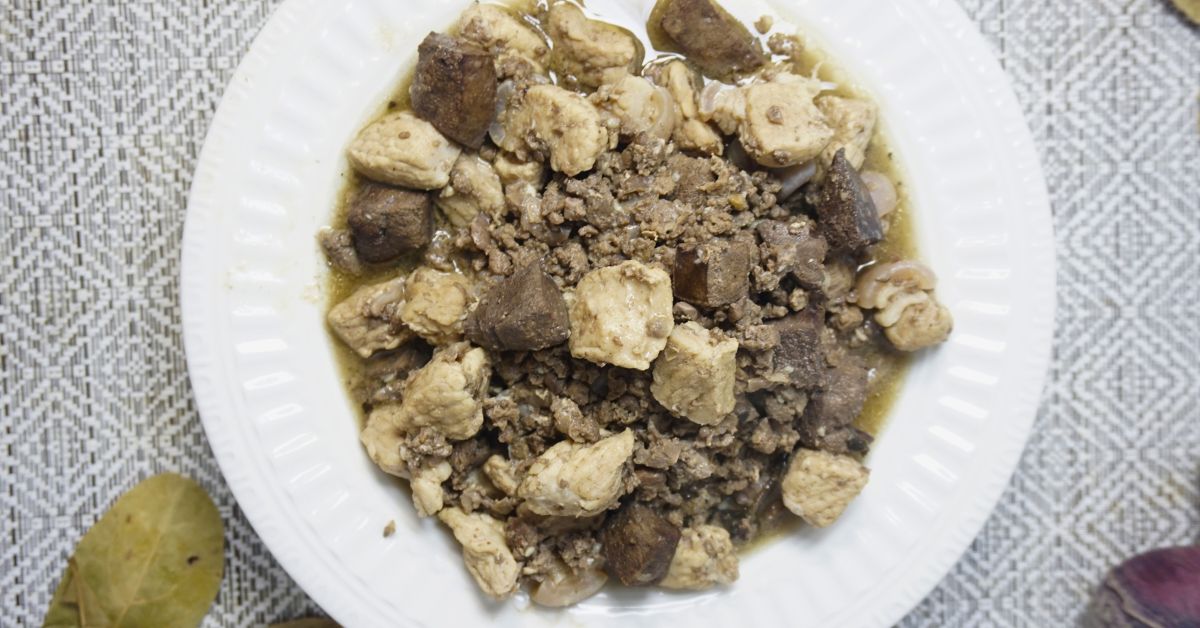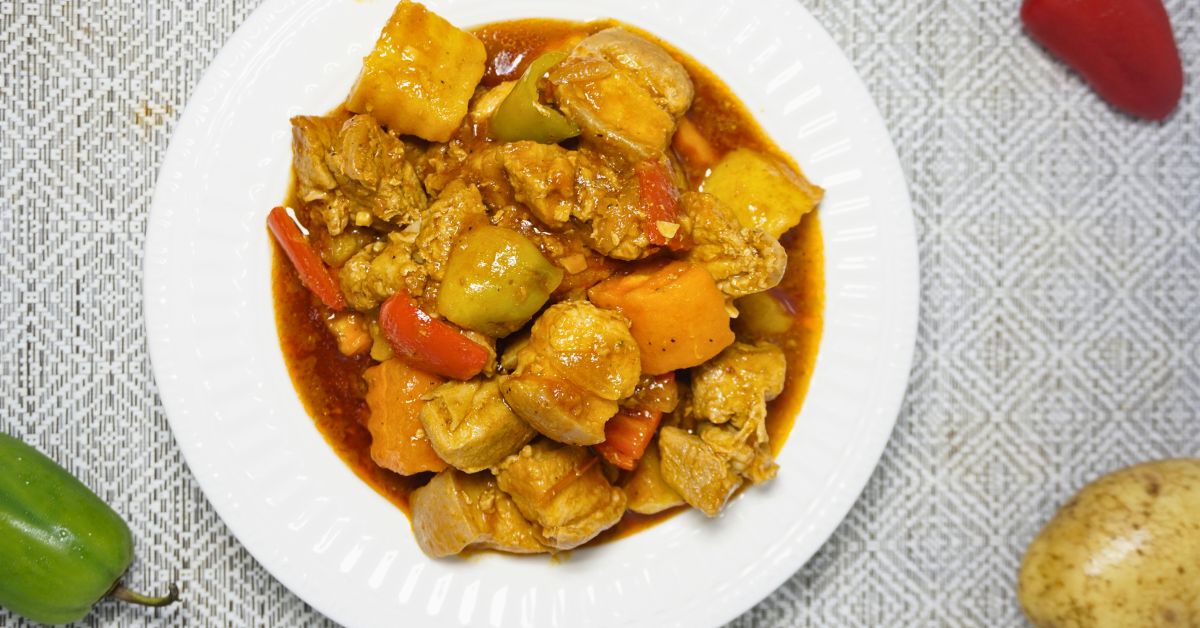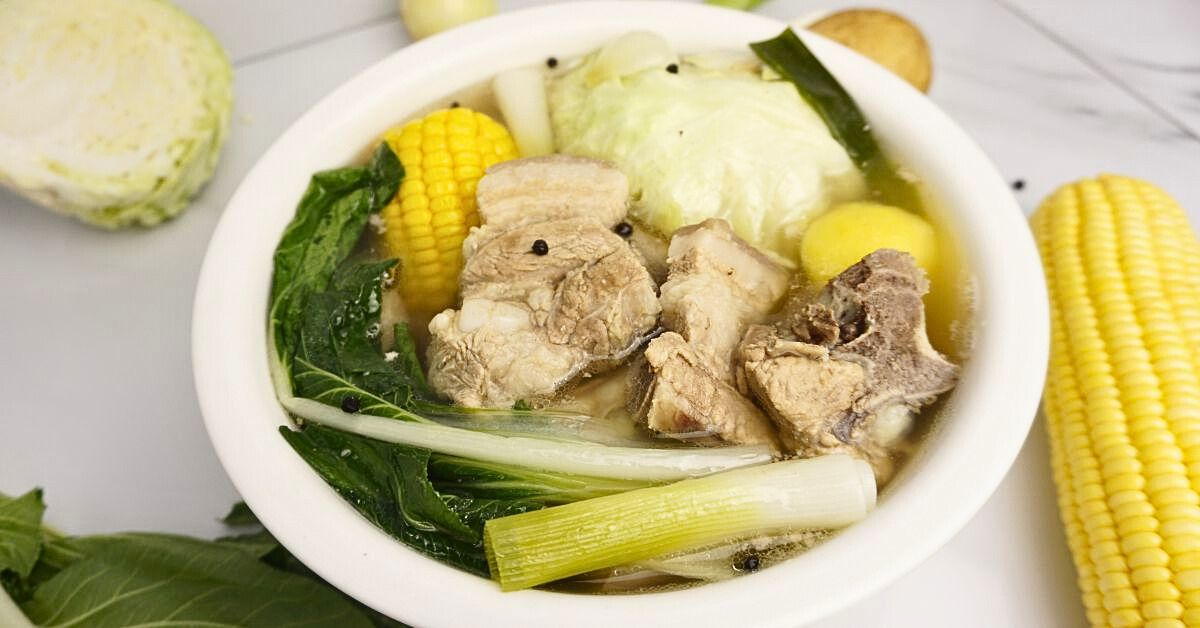
Nilagang baboy, or simply boiled pork soup, holds a special place in many Filipino hearts, including mine. It’s one of those dishes that brings comfort and warmth with every slurp of its savory broth. And you know what? It’s one of the easiest things you can whip up in the kitchen. Seriously, it’s as simple as tossing everything into a pot and letting it work its magic.
There’s something incredibly satisfying about the way the flavors of the pork, vegetables, and spices come together to create a hearty, nourishing meal. Whether you’re feeling under the weather or just craving a taste of home, nilagang baboy never disappoints.
In this blog, I’m excited to share my go-to recipe for nilagang baboy, along with some tips and tricks to make it even more delicious. So grab your apron and let’s get cooking!
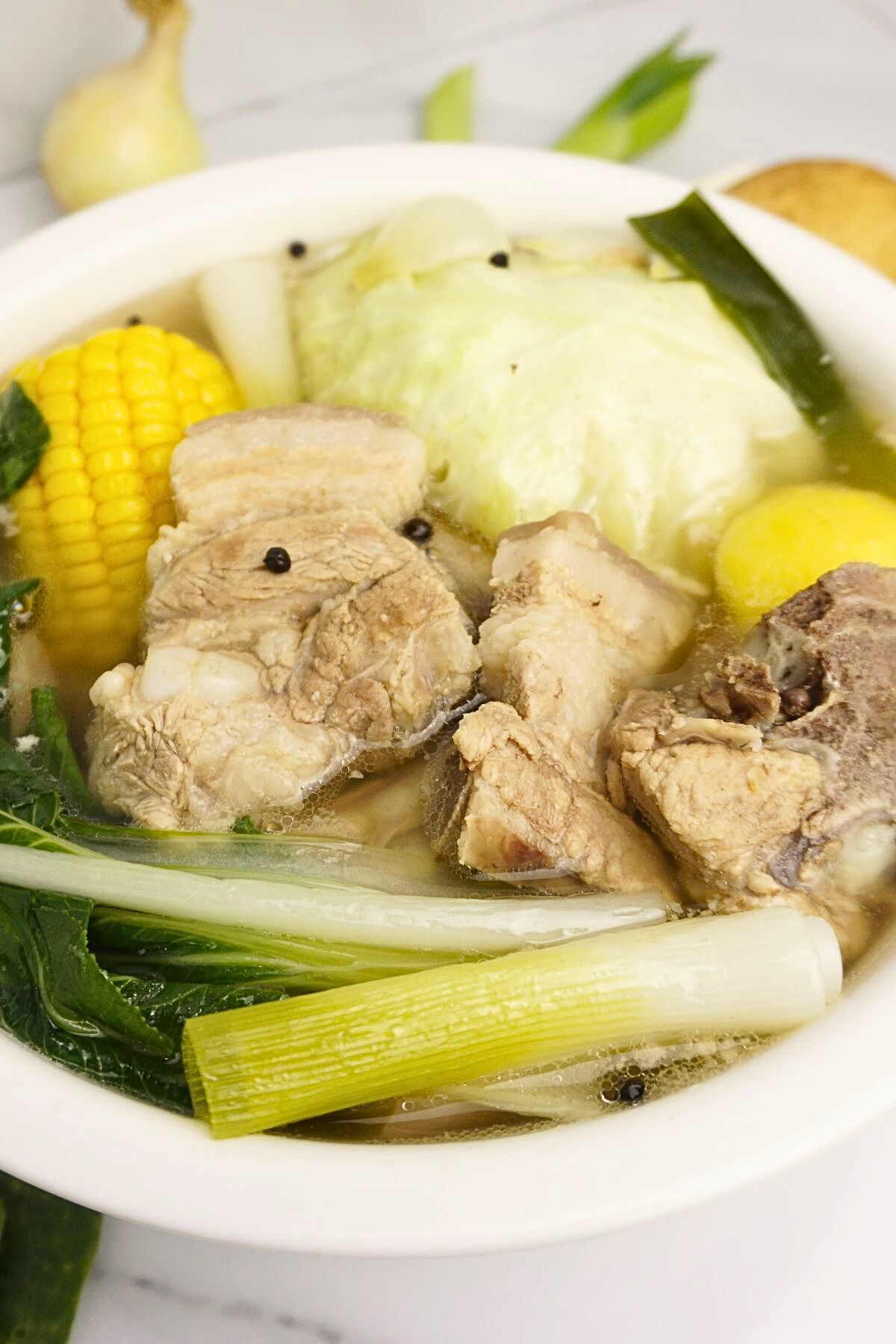
What is the Difference Between Pork Nilaga and Bulalo?
Pork Nilaga is like a quick fix for a comforting meal. It stars pork, usually pork belly or ribs, cooked up with veggies like potatoes and cabbage. You toss everything into a pot, let it simmer for a while, and boom—dinner’s ready! It’s perfect for those busy days when you need something tasty but don’t have a lot of time to spare.
On the other hand, Bulalo is a bit more of a production, but oh-so-worth-it. It’s all about beef, specifically beef shanks and marrow bones, simmered low and slow until the broth becomes rich and flavorful. You throw in some veggies like corn and cabbage, let it all mingle together, and you’ve got yourself a feast fit for a celebration. Bulalo takes its time to cook, but the end result is a bowl of pure comfort that’ll warm you up from the inside out.
So, when it comes down to it, Pork Nilaga is quick and light, while Bulalo is hearty and rich. Both are delicious in their own right, so whether you’re in the mood for something simple or craving a more indulgent meal, Filipino soups have got you covered!

Pork Nilaga Ingredients
- Water: Essential for making the broth, water is the base of the soup, providing the liquid needed to cook all the ingredients together.
- Pork Belly (Chunks): Pork belly adds rich flavor and tender texture to the soup, making it hearty and satisfying with every bite.
- Black Pepper (Whole): Whole black pepper adds a subtle kick of spice and depth of flavor to the soup, enhancing its overall taste.
- Pork Cubes: Pork cubes are concentrated flavor bombs, adding a savory punch to the broth and enriching its taste.
- Sweet Corn: Sweet corn kernels add a touch of sweetness and crunch to the soup, balancing out the savory flavors of the pork and vegetables.
- Potatoes: Potatoes provide a comforting, starchy element to the soup, adding substance and helping to thicken the broth as they cook.
- Fish Sauce: Fish sauce adds a salty, umami-rich flavor to the soup, enhancing the overall taste and depth of the broth.
- Onion: Onions add sweetness and depth to the broth, infusing it with their aromatic flavor as they cook.
- Onion Leeks: Onion leeks contribute a mild, onion-like flavor and a pop of freshness to the soup, adding brightness to each spoonful.
- Cabbage: Cabbage becomes tender and sweet as it simmers in the broth, soaking up all the delicious flavors and adding bulk to the soup.
- Pechay: Pechay, or bok choy, adds a delicate, leafy green flavor to the soup, providing a nutritious addition to the dish.
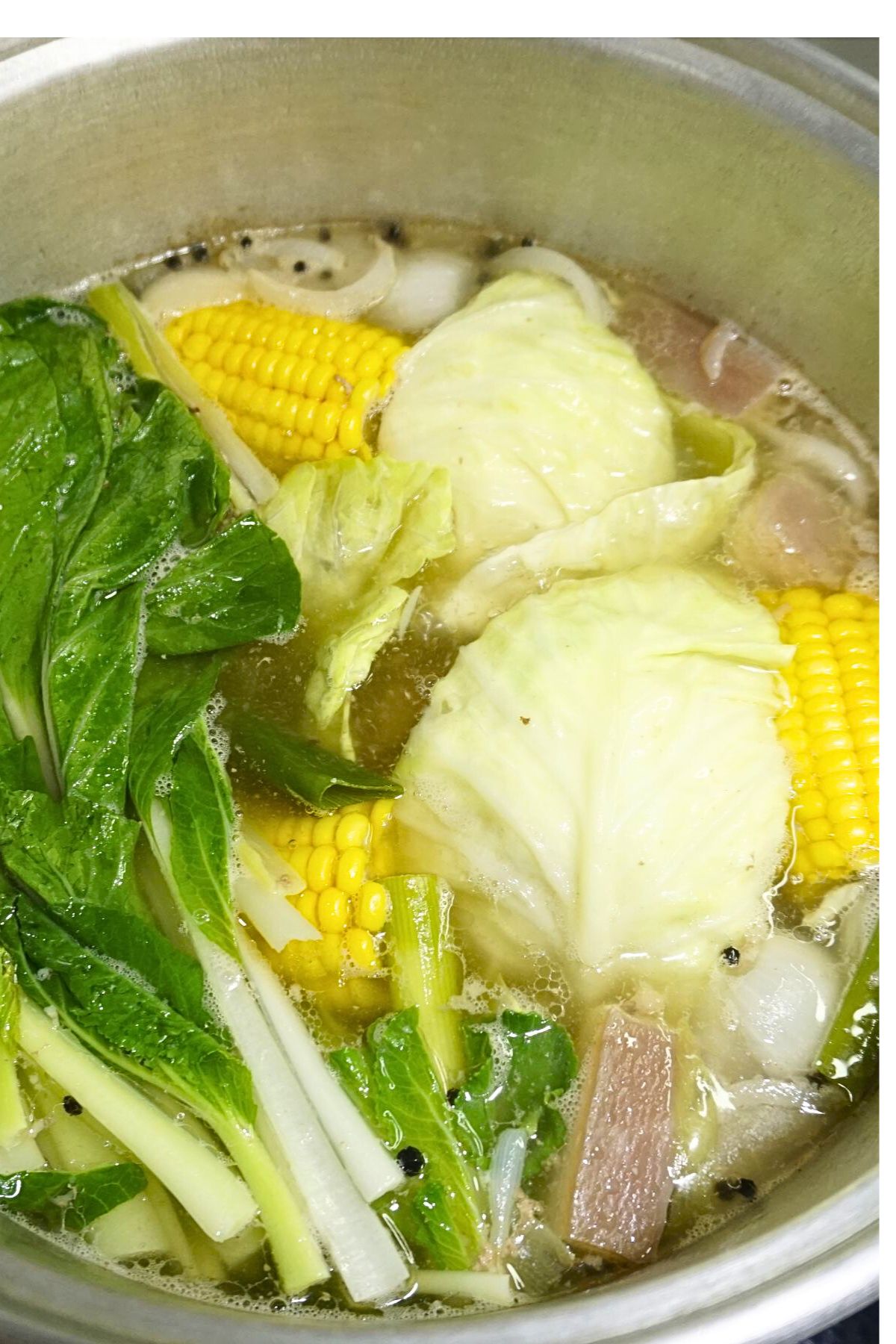
How To Cook Pork Nilaga
Prepare the Broth
In a large pot, pour in 6 cups of water and add the chopped pork. Bring it to a rolling boil over medium heat and let it simmer until the pork is tender, ensuring a flavorful base for your soup.
Enhance the Flavor
Once the pork is nearly tender, introduce two pork cubes and a teaspoon of whole black pepper into the pot. These additions will infuse the broth with a rich, savory flavor that will elevate your soup to the next level.
Add the Vegetables
When the pork reaches the desired tenderness, incorporate the sweet corn and potatoes into the pot. Allow them to simmer alongside the pork until the potatoes are just about tender, absorbing all the delicious flavors of the broth.
Amp Up the Aromatics
After a few minutes of simmering, it’s time to introduce more depth of flavor. Add a tablespoon of fish sauce, along with onions and onion leeks, into the pot. Let them simmer together, infusing the soup with their aromatic essence.
Season to Perfection
Give your soup a taste and adjust the seasoning according to your preference. A pinch of salt can help to balance the flavors and make them sing harmoniously together.
Add the Finishing Touches
Drop in the cabbage and let it cook for about three minutes until it becomes tender. Then, add the pechay to provide a vibrant burst of greenery to your soup, completing the dish with freshness and texture.
Serve and Enjoy
Ladle your steaming hot Nilagang Baboy into bowls and serve immediately. Pair it with some steamed rice for a hearty and satisfying meal that will warm your soul with every spoonful. Enjoy the comforting embrace of this classic Filipino dish—it’s a taste of home in every bite!
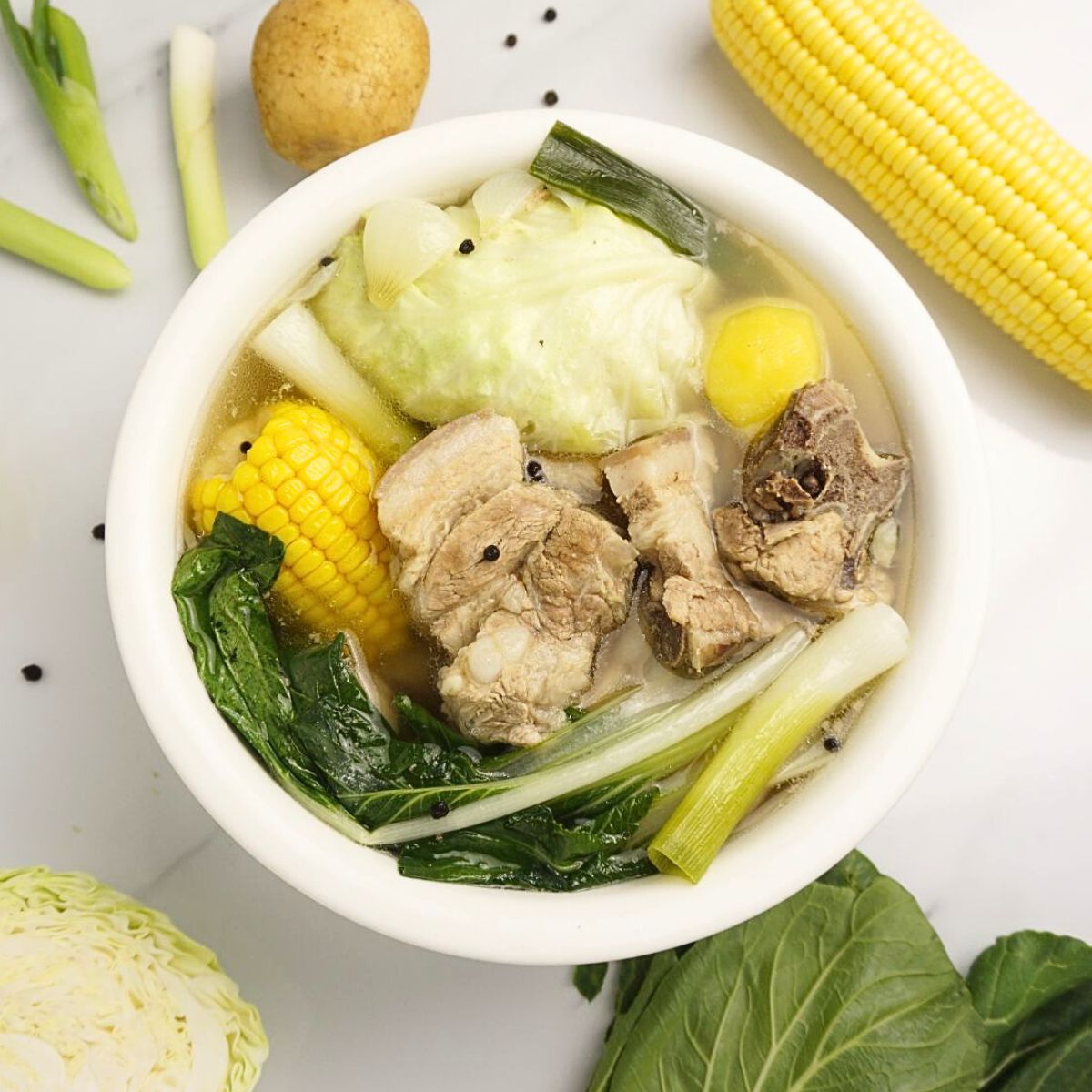
Nilagang Baboy Cooking Tips
- Nilagang Baboy usually takes about 1 to 1.5 hours to cook until the pork is soft. To check if it’s ready, poke the pork with a fork. Adjust the time depending on how you like your meat.
- To keep the veggies from getting too soft, add them at different times. Start with hard ones like potatoes and corn, then add softer ones like cabbage later. This keeps them crispy.
- You can use an Instant Pot or multi-cooker for Nilagang Baboy. Simply follow the same steps for preparing the broth and adding ingredients, then adjust the cooking time according to your appliance’s instructions. Using a pressure cooker can significantly reduce cooking time.
- While the Nilagang Baboy simmers, you may notice some foam or impurities rising to the surface. Use a spoon to skim off this foam periodically. Removing these impurities helps clarify the broth and results in a cleaner, clearer soup.
- Nilagang Baboy tastes even better the next day as the flavors have had more time to develop. Store any leftovers in the refrigerator and simply reheat them when you’re ready to enjoy another comforting bowl. Just remember to add a splash of water or broth when reheating to prevent the soup from becoming too thick.
- Cut the vegetables into uniform sizes to ensure they cook evenly. This helps prevent some pieces from becoming mushy while others remain undercooked. Aim for bite-sized pieces for easy eating and a balanced texture in every spoonful.
Frequently Asked Questions
To make Nilagang Baboy healthier, opt for leaner cuts of pork and load up on a variety of vegetables. You can also reduce the amount of salt and use low-sodium broth or fish sauce for a lighter option.
If your soup turns out too salty, simply dilute it with more water or unsalted broth until you reach your desired level of saltiness. You can also balance out the saltiness with a squeeze of lime juice or a teaspoon of sugar.
Yes, you can use frozen pork for Nilagang Baboy, but make sure to thaw it completely in the refrigerator before cooking. This ensures even cooking and proper flavor absorption.
Typically, us Filipinos serve Nilagang Baboy with steamed rice on the side, but you can also enjoy it with bread or even on its own as a hearty soup.

Pork Nilaga (Boiled Pork Soup)
Ingredients
- 6 cups Water
- 1 kilogram Pork Belly (chunks)
- 1 tsp Whole Black Pepper
- 2 pieces Pork Cubes
- 1 piece Sweet Corn large (cut in three)
- 3 pieces Potatoes (cut in half)
- 1 tbsp Fish Sauce
- 1 piece Onion large (squared)
- 2 pieces Onion Leeks (chopped)
- 1 piece Cabbage medium (cut in half)
- 2 bunch Pechay bottom removed
Instructions
- In a pot pour 6 cups of water and put in the chopped pork. Bring to a boil until the meat is tender.
- When the meat is almost tender, put two pork cubes and one teaspoon of whole black pepper to add flavor to your soup.
- When the meat is tender add the sweet corn and potatoes, let it simmer until the potatoes are almost tender.
- After a few minutes add a tablespoon of fish sauce, onions and onion leeks. Let it simmer.
- Check and adjust with salt according to your taste.
- Then add the cabbage, let the cabbage cook for three minutes then add the pechay.
- Transfer to a bowl and serve!
Video
Notes
- Add saba bananas (sweet plantain) for a slightly sweet flavor.
- Serve with steamed rice and a dipping sauce of fish sauce with calamansi or lemon.
